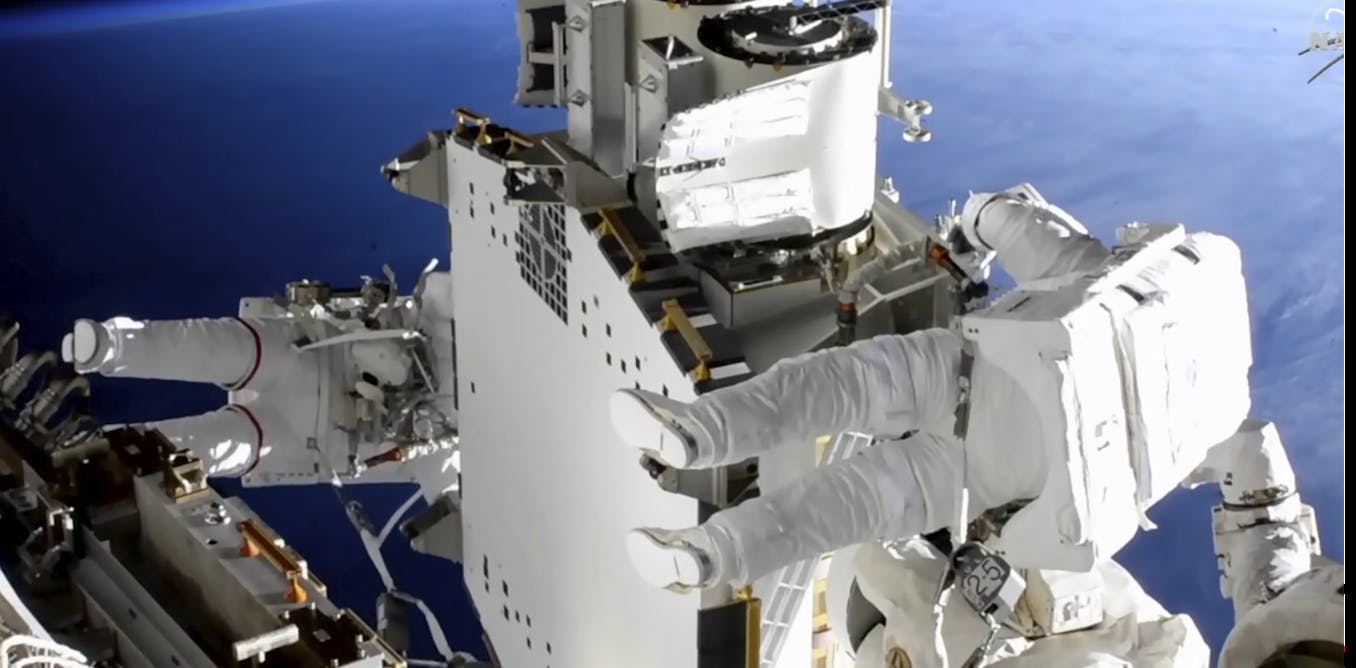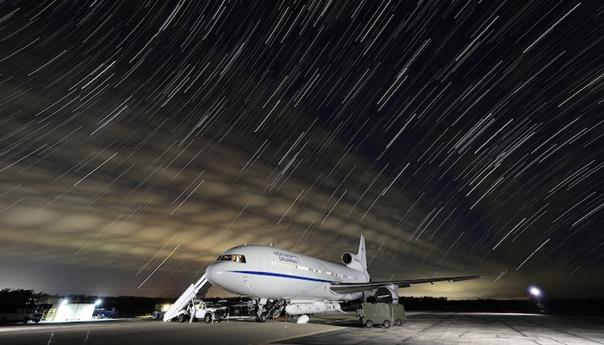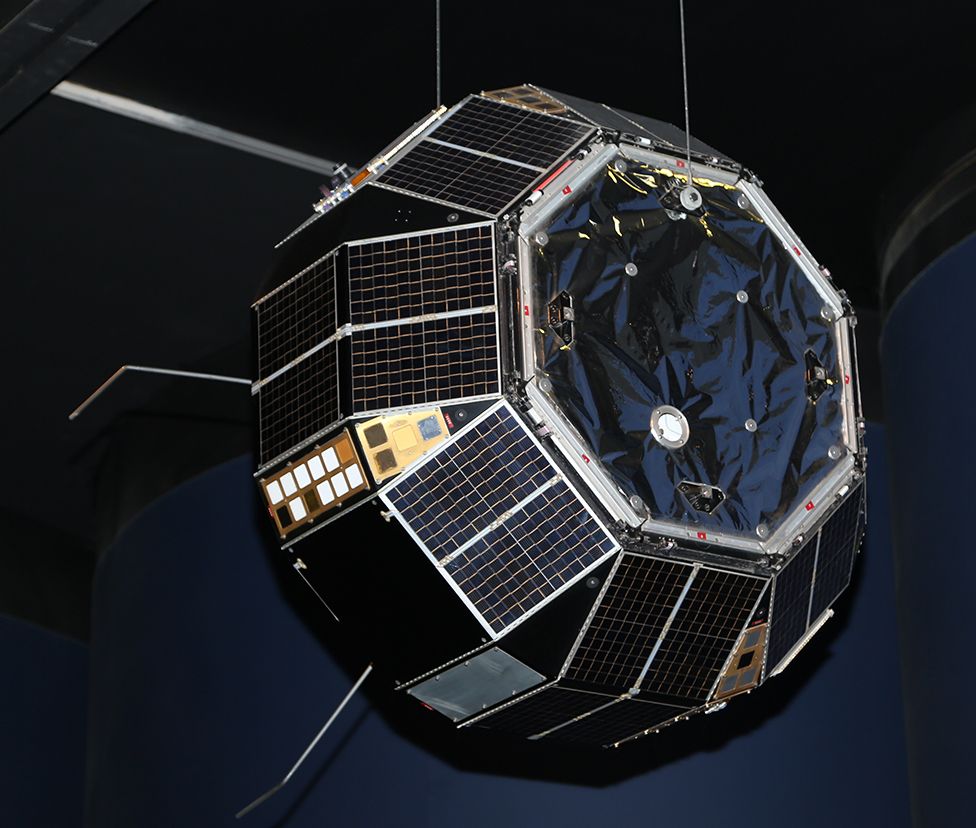TOP NEWS
FAA: New Tool Limits Disruptions Caused By Space Operations
Federal regulators said Thursday they now can better track rocket launches and space vehicles returning to Earth, which could cut the amount of time that airplanes must be routed around space operations.
The Federal Aviation Administration said a new tool automates the near-instantaneous delivery of data about a space vehicle’s flight path to the nation’s air traffic control system.
The tool, called the Space Data Integrator, will replace a system in which much of the work of giving telemetry data about space vehicles to air traffic control managers is done manually.
Read more at: ABCnews
Space Junk Flies At 1.8 Km Distance From Orbital Outpost — Roscosmos
A piece of space junk flew at a distance of 1.8 km from the International Space Station (ISS), Russia’s State Space Corporation Roscosmos announced on Thursday.—
“According to the data of Russian specialists, an uncatalogued piece of space debris flew at a distance of 1.8 km from the International Space Station at around 4:15 p.m. Moscow time,” the statement says.
It was highly unlikely that the orbit paths of the orbital outpost and the space junk would intersect and, therefore, there was no need for the ISS to conduct an avoidance maneuver, the Russian space agency explained.
Read more at: TASS
The Hubble Space Telescope Is Facing Its Most Serious Glitch In A Decade And NASA Really Wants To Fix It
The venerable Hubble Space Telescope is facing its most serious malfunction in more than a decade, and while NASA is eager to restore the iconic observatory, the agency doesn’t want to rush that fix-it process. On June 13, Hubble unexpectedly stopped doing science work in what mission engineers originally suspected was a case of a memory module gone bad. But the anomaly has turned out to be more slippery than that.
Now, more than three weeks later, NASA’s team is still working to pin down precisely what went wrong on the observatory, which astronauts deployed from space shuttle Discovery in 1990 and last repaired in 2009. Although the anomaly has been trickier than originally expected, NASA officials are confident that Hubble has plenty more science up its sleeve.
Read more at: Space.com
SPACE HAZARDS AND STM
Chinese Researchers Propose Deflecting ‘Armageddon’ Asteroids With Rockets
Chinese researchers want to send more than 20 of China’s largest rockets to practice turning away a sizable asteroid – a technique that may eventually be crucial if a killer rock is on a collision course with Earth.
The idea is more than science fiction. Sometime between late 2021 to early 2022, the United States will launch a robotic spacecraft to intercept two asteroids relatively close to Earth.
When it arrives a year later, the NASA spacecraft will crash-land on the smaller of the two rocky bodies to see how much the asteroid’s trajectory changes. It will be humanity’s first try at changing the course of a celestial body.
Read more at: Reuters

Repurposed Communications Satellites Could Help Save Humanity From An Asteroid Impact
Large satellites used for TV broadcasting could be quickly and easily repurposed as asteroid deflectors if a space rock were to threaten Earth, according to a study by the European aerospace company Airbus. The study, part of a mission concept called Fast Kinetic Deflection (FastKD), was commissioned by the European Space Agency (ESA), as part of its effort to prepare for an apocalyptic scenario that will certainly happen one day (even though that day might be in a very distant future).
Read more at: Space.com
Another Free-Falling Chinese Rocket Body Hit Earth Last Week
On July 3, another Chinese rocket fell to Earth. But this one landed in the Pacific Ocean with very little splash.
The Long March-2F rocket launched June 17 from the Jiuquan Satellite Launch Center in northwest China. It carried the Shenzhou-12 spacecraft and three Chinese astronauts to the country’s new space station. Then, just like its higher-profile predecessor, the Long March-5B, the rocket ran out of fuel after boosting the astronauts into space and began to free-fall back to Earth.
Just like with the earlier rocket free-fall, the task of tracking its path fell to U.S. Space Command’s 18th Space Control Squadron at Vandenberg Air Force Base in California.
Read more at: defenseone
NEW SPACE/COMMERCIAL
Space Tugs As A Service: In-Orbit Service Providers Are Bracing For Consolidation
Orbital transfer and servicing providers are bracing for a space tug of war as they jostle for position in an increasingly crowded market.
Newcomers are flooding into a space tug industry that has only emerged in recent years, pushing their own ideas to give operators greater flexibility for deploying and maintaining satellites.
At one end of the spectrum, companies such as Spaceflight, Exolaunch and Momentus are devising tugs that satellites attach to on the ground before they are transported to custom orbits post-launch. These services enable customers to cut costs by reducing a satellite’s onboard propulsion, or by removing it altogether and hosting the payload on the tug — sometimes called an orbital transfer vehicle (OTV).
Read more at: Spacenews
Richard Branson Believes The Space Market Has Room For 20 Companies Launching Tourists
Sir Richard Branson may be trying to be first in the billionaire space race, but he believes there is plenty of opportunity in the market for companies like Virgin Galactic, Jeff Bezos’ Blue Origin, or Elon Musk’s SpaceX. “There’s room for 20 space companies to take people up there,” Branson said in an interview this week. “The more spaceships we can build, the more we can bring the price down and the more we’ll be able to satisfy demand and that will happen over the years to come.” Virgin Galactic leadership has previously forecast that “around 2 million people can experience” spaceflights that are priced in the $250,000 to $500,000 range.
Read more at: CNBC
SCIENCE AND TECHNOLOGY
Dutch Robot Arm Heading Into Space After 35 Years
The European Robotic Arm (ERA), built by the Leiden company Dutch Space, is making a trip to the International Space Station after 35 years of development. The ERA is set to be launched from Russia on July 15. The arm was originally supposed to go to the ISS as early as 2002 and was postponed numerous times later on.
The arm has the ability to carry crew members to their assigned positions. Furthermore, the device can take equipment from the ISS and deploy it outside while in orbit, much like a crane. The ERA can also be used to inspect the exterior of the space station for damage.
Read more at: nltimes
Launch Of Russia’s Nauka Research Module To Orbital Outpost Rescheduled For July 21
The launch of Russia’s Nauka multifunctional laboratory module to the International Space Station (ISS) is scheduled for July 21, Head of the State Space Corporation Roscosmos Dmitry Rogozin said on Thursday.
The launch of the Nauka research module to the orbital outpost was previously scheduled for July 15.
“The delivery of a Proton-M carrier rocket with the Nauka multifunctional laboratory module for the ISS Russian segment to the Baikonur launch pad is scheduled for July 17, and the launch for July 21 while July 22 and July 23 are the backup dates,” Rogozin wrote in his Telegram channel.
Read more at: TASS

NASA Awards Contract To Northrop Grumman To Build Gateway Module
NASA has awarded a contract worth $935 million to Northrop Grumman to build and integrate the first habitation module for the lunar Gateway.
NASA announced July 9 it finalized a contract with Northrop Grumman to build the Habitation and Logistics Outpost (HALO) module for the Gateway. That module, one of the first for the Gateway, will serve as a habitat for visiting astronauts and a command post for the lunar orbiting facility. It will have docking ports for Orion spacecraft, cargo vehicles like SpaceX’s Dragon XL and lunar landers, as well as for later modules to be added by international partners.
Read more at: Spacenews
Ten Years On, Northrop Grumman Reflects On Changes To Solid Rocket Motors From Shuttle To SLS Era
Ten years ago, on 8 July 2011, two, four-segment Solid Rocket Boosters (SRBs) came to life on LC-39A at the Kennedy Space Center, propelling the orbiter Atlantis and her four person crew upwards toward space on the 135th and final Space Shuttle mission.
It marked the 269th and 270th flight firings of an SRB for the Shuttle program and the 265th and 266th and final recoveries of the iconic rocket motors, which always flew in pairs — not just in terms of a full booster stack but for each individual motor segment as well that was paired with a “propellant twin” upon casting in Utah.
For SLS, two well documented, and visible changes have been made to the boosters, which are technically called Five Segment Reusable Solid Rocket Motor (RSRMV): the addition of a fifth propellant segment and the removal of all recovery and reuse hardware.
Read more at: NASAspaceflight
What Does It Take To Do A Spacewalk? Skill, Courage, And Being Able To Wear A Men’s Size Medium
On June 25, astronauts Shane Kimbrough and Thomas Pesquet successfully completed an almost seven-hour EVA (extravehicular activity, or spacewalk) to install solar panels on the International Space Station. What does it take to don a spacesuit and venture out on such a technical and dangerous mission? Surprisingly, one of the main criteria (besides the years of astronaut training) is body size.
EVA capabilities blossomed during the era of NASA’s space shuttle. Astronauts rode robotic arms, floated tetherless through the void using jetpacks to steer, corralled satellites by hand, and built the International Space Station (ISS).
Read more at: Conversation

SPACE POLICY
Aussie Boost To Civil Space Market
Four space companies will share in nearly $14 million in funding from the federal government, designed to put Aussie manufacturers on the map globally.
Industry Minister Christian Porter said the funding would go towards the development of an array of space-related technologies, ranging from satellites and components in sensors, to rocket engines.
“These grants will help bolster Australia’s reputation in the growing global civil space industry and build on the important work being led by our Australian Space Agency,” Mr Porter said.
Read more at: weeklytimesnow
Biden’s OSTP Gets Commercial Input on Planetary Protection
The Biden White House is continuing to work on implementing the Trump Administration’s National Strategy for Planetary Protection. Last week, the Office of Science and Technology Policy (OSTP) held a day-long roundtable with representatives of companies and industry associations to get feedback on planetary protection issues.
SpacePolicyOnline.com learned of the event in advance and asked if media could attend, but the answer was no. Nor could we get a list of who was invited. But OSTP provided us with this readout of the event after the fact.
Read more at: Spacepolicy online
SPACE DEFENSE
Space Force Opens Facility To Improve War-Fighting Capabilities
The U.S. Space Force opened a new satellite operations center July 7 at Kirtland Air Force Base in New Mexico designed to advance the still nascent service’s space war-fighting capabilities.
The Rendezvous and Proximity (REPR) Satellite Operations Center was established by the Space and Missile Systems Center’s Innovation and Prototyping Directorate as a new workspace to drive on-orbit experimentation and demonstrations with prototype satellites and payloads.
Read more at: c4isrnet
LLNL’s Tactically Responsive Launch-2 payload launched into orbit
When the U.S. Space Force ’s Tactically Responsive Launch-2 (TacRL-2) mission launched from Vandenberg Space Force Base on June 13, it carried a payload designed and built in record time by Lawrence Livermore National Laboratory (LLNL). LLNL provided a three-mirror reflective telescope and sensor for the payload, which they designed, integrated, tested and delivered within four months of the word “go.” The Lab delivered the payload to its partners at Space Dynamics Laboratory (SDL) and the Air Force Research Laboratory (AFRL). “We needed a novel design in order to meet the program objectives,” said LLNL project leader John Ganino. “The payload system required a set of three LLNL monolith optics, auto-focus capability and an electronic control module to interface with the spacecraft bus.”
Read more at: llnl

Suspected Secret Satellite Launched From ISS Was Just Japanese Cubesat
The US Space Command has clarified recent reports of a “secret satellite” launched from the International Space Station which actually was a Japanese CubeSat mistakenly registered by the space tracking service as an American object, USSPACECOM Director of Public Affairs, Lieutenant Colonel Erin Dick told Sputnik on Friday.
Sputnik reported on 1 July that the United States had secretly launched a satellite from its segment of the ISS, cataloged by the space-track.org service as BD-28 with an American country code.
Read more at: Spacedaily
VARIOUS
Prospero: Quest To Retrieve 50-Year-Old UK Space Debris
Edinburgh-based rocket company Skyrora is issuing a challenge to find a way to retrieve the Prospero satellite. The object was the first and only UK spacecraft to be launched on a British rocket, from Australia in 1971. It’s defunct now, obviously, but is still circling the globe on an elliptical orbit some 1,000km up. Skyrora, who will soon start sending up rockets from Scotland, regards the satellite as an important piece of UK space heritage.
Read more at: BBC



















![A trajectory analysis that used a computational fluid dynamics approach to determine the likely position and velocity histories of the foam (Credits: NASA Ref [1] p61).](http://www.spacesafetymagazine.com/wp-content/uploads/2014/05/fluid-dynamics-trajectory-analysis-50x50.jpg)


